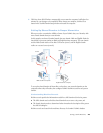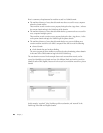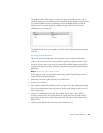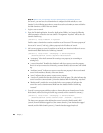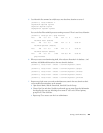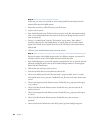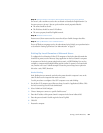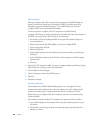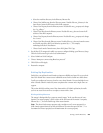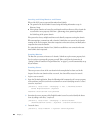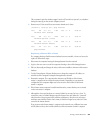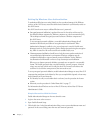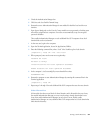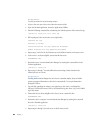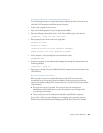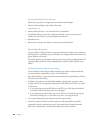Setting Up NetInfo Hierarchies 53
c Select the machines directory in the Directory Browser list.
d Choose New Subdirectory from the Directory menu. Double-click new_directory in the
lower list and enter the DNS name of the child computer.
e Choose New Property from the Directory menu. Double-click new_property and change
it to “ip_address.”
f Choose New Value from the Directory menu. Double-click new_value and enter the IP
address of the child computer.
g Choose New Property from the Directory menu. Double-click new_property and change
it to “serves.”
h Choose New Value from the Directory menu. Double-click new_value and enter the name
and NetInfo tag of the child’s local domain, separated by a “/”, for example,
marketing.demo/local. Press Return.
i Choose Save from the Domain menu, then click Update This Copy.
2 On the Mac OS X computer for which you want to configure binding, open Directory Setup.
Click the lock icon and log in as the local administrator.
3 Select NetInfo and click Configure.
4 Choose “Attempt to connect using Broadcast protocol.”
5 Click OK, then click Apply.
6 Restart the computer.
Setting Up Replication
NetInfo lets you replicate shared domains to improve reliability and speed of access to their
data. Each domain has a master server. Additional servers for the domain are called clones.
Usually you configure at least one clone for every shared domain. You need multiple clones
when a shared domain is needed by more computers than a master and a single clone can
support.
This section briefly describes some of the characteristics of NetInfo replication, then tells
you how to create clones and how to replace a master with a clone.
Distinguishing Masters
The master is distinguished by a property named “master” in the root directory of every
domain. The master property’s value consists of the DNS name of the master’s computer,
followed by a “/”, then the NetInfo tag of the master domain.
Note: The values for the master property and a machine record’s serves property for a
child domain appear identical, but they are different. The name that precedes the “/” is a
host name for a master property but a domain name for a serves property.



